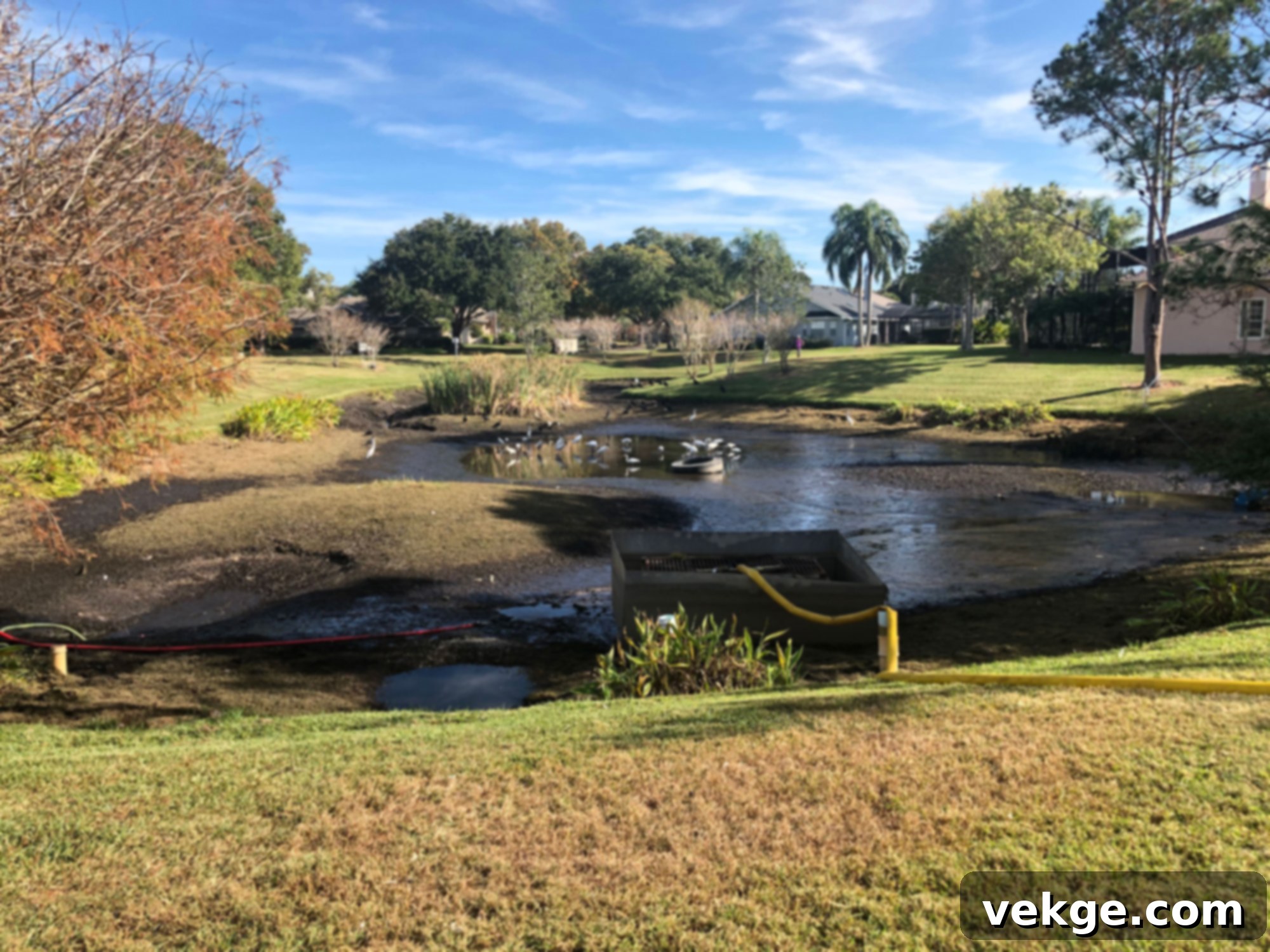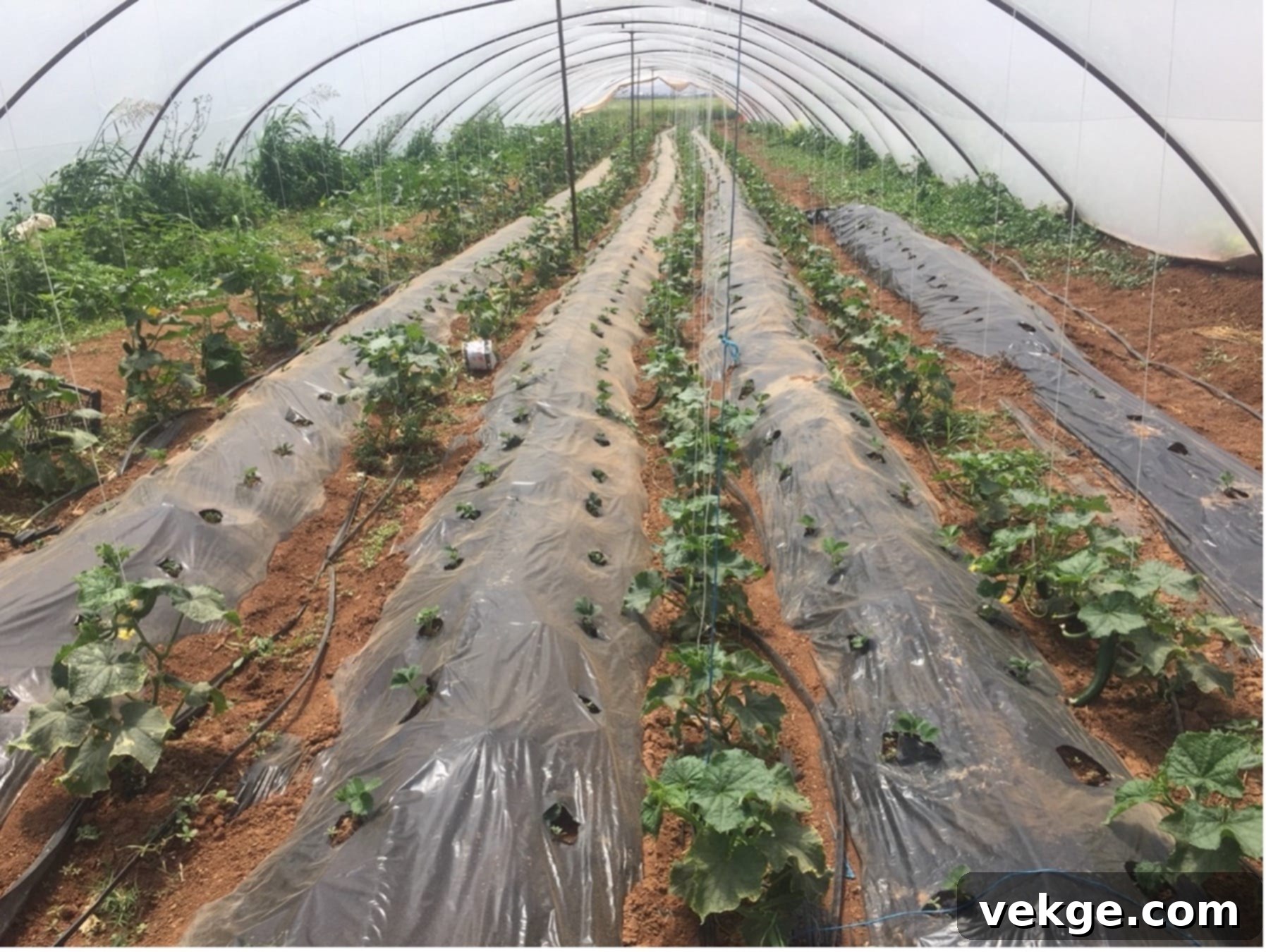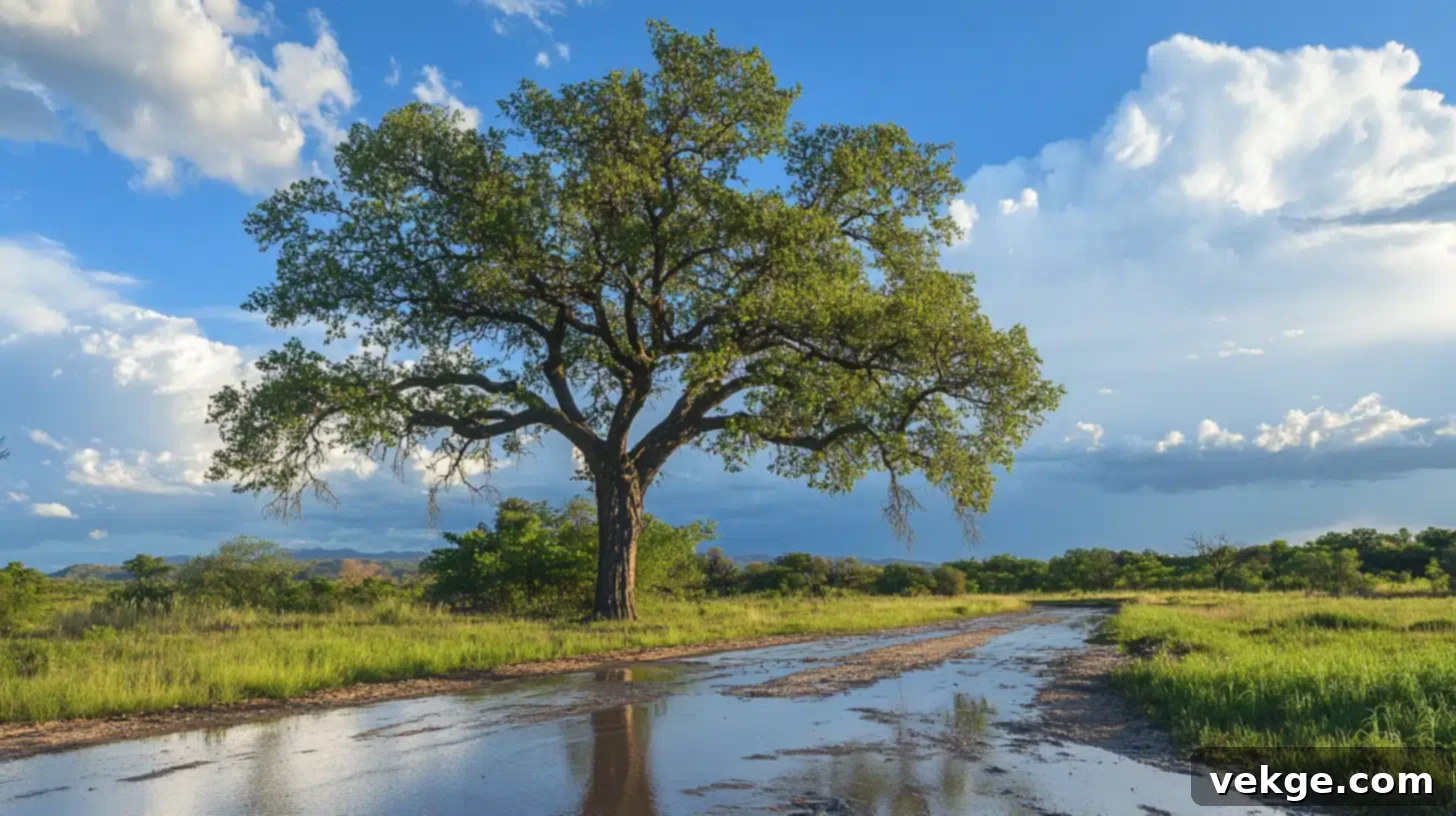Revitalizing Drought-Stressed Trees: An Expert Guide to Post-Rainstorm Recovery
While a rainstorm can bring much-needed relief to parched landscapes, it also introduces unique challenges for trees already weakened by drought. The sudden influx of water, combined with existing stress, can paradoxically create further complications if not managed correctly. Understanding the right steps to take after a downpour is therefore critical for ensuring the long-term health and survival of your trees. In this comprehensive guide, we will delve into expert strategies for protecting your drought-stressed trees following rainstorms, drawing on the extensive knowledge of local tree care specialists from Tree Doctors Toronto, who have been dedicated to urban arboriculture for many years.
Understanding the Impact of Rainstorms on Drought-Affected Trees

For a tree enduring a prolonged dry spell, a rainstorm might seem like the ultimate solution. However, the sudden and often intense exposure to water can be a double-edged sword. When trees experience drought, their root systems shrink, become brittle, or even suffer damage as they struggle to find moisture in dry soil. This compromised state makes it difficult for them to efficiently absorb large quantities of water suddenly, leading to potential issues like root shock or even suffocation.
Moreover, the soil surrounding these drought-affected plants may have become compacted and hydrophobic during the dry period. This means it struggles to absorb water effectively, causing much of the rainfall to run off the surface instead of penetrating deeply to the root zone. This runoff not only wastes precious water but can also erode topsoil, further exacerbating the tree’s stress.
Compounding these issues, weakened roots combined with saturated ground drastically increase the risk of tree instability. During strong winds, especially those accompanying rainstorms, trees with larger canopies or older, heavy trunks are far more susceptible to falling over. This period immediately following heavy rainfall, therefore, demands immediate attention and careful assessment to prevent irreversible damage or hazardous situations.
Assessing Your Tree’s Health Status After Rainfall
The initial and most crucial step in safeguarding your drought-stricken trees post-rain is a thorough evaluation of their current health. Begin by observing the overall canopy for any visible signs of stress. Look for browning or yellowing leaves, particularly at the edges or tips, which often indicate water-related stress. Sparse foliage, premature leaf drop, or wilting are also significant indicators of a tree struggling to recover.
Next, focus on the soil around the tree’s base. It’s vital to determine if the ground is adequately moist, excessively saturated, or surprisingly still dry beneath the surface. Toronto’s certified arborists recommend a more precise method: gently digging into the soil around the tree’s root zone, ideally to a depth of about two feet where most of the critical feeder roots reside. Examine the soil’s texture and smell. If the soil feels mushy, waterlogged, and emits a foul odor reminiscent of rotten eggs, it’s a strong sign of potential root rot. This fungal infection commonly develops in overly saturated, poorly drained soils, particularly after heavy downpours following a period of drought stress, as the compromised roots are highly vulnerable.
Strategic Watering for Optimal Recovery
While it may seem counterintuitive to water a tree that has just received rainfall, strategic supplemental watering is often essential, especially if the rain was a light shower or did not deeply penetrate the soil. However, the key lies in careful application to avoid exacerbating the tree’s condition through overhydration.
The goal is deep, consistent watering that encourages roots to grow downwards, reaching the deepest parts of the soil where moisture is most crucial for long-term health. Superficial watering encourages shallow root growth, making trees more susceptible to future droughts. You can achieve deep irrigation by employing slow-release methods such as soaker hoses or drip irrigation systems. These systems deliver water gradually, allowing it to seep slowly and deeply into the lower soil layers, ensuring even saturation without runoff or waste. When using these methods, always avoid wetting the tree’s leaves and stems directly, as this can create a humid environment conducive to the development of fungal diseases like powdery mildew.
Timing your watering is also crucial for drought-stressed trees. The best times are early morning or late evening, as these periods minimize water loss through evaporation, allowing more moisture to reach the root zone. Regularly check the soil moisture level by hand or with a moisture meter. Feel the soil at various depths – a few inches down – to determine if it’s moist but not waterlogged. Adjust your watering frequency and duration accordingly; remember, just as too little water is detrimental, excessive wetness can also cause significant harm, particularly leading to root rot in already vulnerable trees.
Mulching for Enhanced Moisture Conservation and Soil Health

After rainstorms, applying a fresh layer of organic mulch is one of the most effective and beneficial practices for protecting your trees. Mulch, typically composed of natural materials like wood chips, bark, or compost, acts as a protective blanket over the soil. It functions as a sponge, retaining essential moisture in the soil for longer periods by significantly reducing evaporation. Beyond moisture retention, mulch also plays a vital role in regulating soil temperature, keeping roots cooler in summer and warmer in winter, thus minimizing temperature fluctuations that can stress trees. Furthermore, it effectively suppresses weed growth, which competes with your tree for water and nutrients.
An additional benefit of mulching, particularly after heavy rainfall, is its ability to prevent soil compaction. Heavy rains followed by intense sun can often lead to compacted soil, hindering air and water penetration. A layer of mulch helps maintain a loose, aerated soil structure, which is crucial for healthy root development and overall tree vigor.
When applying mulch, ensure it forms an even layer around the base of the tree, extending out to its drip line – the imaginary circle on the ground directly beneath the outer edge of the tree’s branches. The ideal depth for a mulch layer is generally between 2 to 4 inches. It is critically important to keep the mulch a few inches away from the tree trunk, creating a small ‘doughnut hole’ or ‘mulch-free zone’ around the trunk. Piling mulch directly against the trunk, often referred to as ‘volcano mulching,’ can lead to detrimental issues such as bark decay, fungal diseases, and create an inviting habitat for pests like rodents, which can girdle the tree.
Strategic Pruning for a Strong and Resilient Structure
Pruning your trees after a rainstorm is a proactive measure that helps alleviate immediate stress and prevents further damage during subsequent inclement weather. The primary focus of post-storm pruning should be the removal of any dead, diseased, or damaged branches. These compromised branches are not only unsightly but also pose significant risks: they can become entry points for various diseases and insect pests, and they are prone to breaking off during future storms, potentially causing injury or property damage.
Additionally, strategic thinning of the tree’s canopy can be highly beneficial. By removing overcrowded or poorly structured branches, you reduce the overall wind resistance of the tree, thereby significantly lowering its chances of breakage or uprooting during strong winds and future storms. This also improves air circulation within the canopy, which helps reduce the risk of fungal diseases.
According to the experts at Tree Doctors Toronto, employing correct pruning methods is paramount, especially when dealing with drought-stressed trees that are already vulnerable. Always aim to make clean, precise cuts just outside the branch collar – the swollen area at the base of a branch where it attaches to the trunk or a larger limb. Avoiding leaving behind stubs, which fail to heal properly and invite decay, and refraining from making flush cuts, which can create large wounds that interfere with the tree’s natural healing processes, are critical for the tree’s long-term health and structural integrity.
If you are uncertain about the best pruning techniques for your specific trees, or if the damage is extensive, it is always wise to consult a certified arborist. Professionals possess the expertise to accurately assess tree health, identify structural weaknesses, and perform proper pruning that promotes healing and strengthens the tree without causing further stress.
Vigilant Monitoring for Pests and Diseases
After a rainstorm, drought-stressed trees are particularly susceptible to various pests and diseases due to their weakened state and the often-humid conditions. The stress from drought compromises the tree’s natural defenses, making it an easy target. Common insect pests like borers, aphids, scale insects, and spider mites often gravitate towards stressed trees, as they lack the vigor to fight off infestations. These pests can rapidly accelerate the tree’s decline by feeding on sap, leaves, or boring into the wood.
Furthermore, the wet conditions following heavy rains, especially in combination with poor drainage, create an ideal environment for the proliferation of fungal and bacterial infections. Root rots, as previously mentioned, are a major concern in waterlogged soils. Other common diseases include powdery mildew, various leaf spots, cankers, and blights, which can quickly spread across foliage and branches.
Frequent and thorough check-ups of your trees are absolutely necessary to detect any signs of infestation or disease early enough before they spread widely and cause irreparable harm. Look diligently for discolored leaves, unusual growths, wilting, sap oozing from the trunk, or visible insects crawling on branches and trunks. Inspect both the upper and undersides of leaves, as well as the bark. Once any signs are noticed, immediate action is crucial. Timely intervention can often save an affected tree, but failure to act swiftly may lead to severe damage or complete tree loss, necessitating professional intervention to save remaining parts if possible.
Enhancing Tree Resilience Against Future Environmental Challenges
Long-term protection of your trees against the fluctuating extremes of both drought and intense storms is achieved by proactively enhancing their inherent ability to withstand such challenging conditions. This involves a commitment to continuous, thoughtful care that extends beyond immediate post-storm recovery.
One key aspect is maintaining optimal nutrient levels. The application of slow-release fertilizers, particularly during the spring, can help replenish nutrients that may have been depleted during a dry spell or washed away by heavy rains. However, it’s crucial to exercise caution; over-fertilization can be detrimental, leading to excessive top growth that may overwhelm the tree’s root system and structural stability, making it more vulnerable to wind damage. Opt for balanced, organic fertilizers that improve soil health over time.
Beyond fertilization, focus on improving overall soil structure and health. Incorporating organic matter regularly can enhance drainage in heavy soils and increase water retention in sandy soils, creating a more balanced and resilient environment for roots. Consider aeration techniques if soil compaction is severe.
Moreover, when considering new plantings, prioritize species that are known for their tolerance to fluctuating moisture levels and local climatic conditions. Indigenous tree species are often the best choice, as they are naturally adapted to the local environment, requiring less supplemental watering and maintenance, and typically exhibiting greater resilience to both drought and storm events. Their established genetic adaptations make them more robust against environmental stressors.
Finally, regular structural pruning by a qualified arborist, even in the absence of storm damage, is vital for long-term resilience. This type of pruning focuses on developing a strong central leader and well-spaced, sturdy branches, creating a robust framework that is inherently more resistant to wind and ice damage.
Conclusion
Caring for drought-stricken trees after a rainstorm demands a comprehensive and well-thought-out strategy that addresses the complex challenges associated with both prolonged periods of dryness and the sudden, sometimes overwhelming, effects of heavy downpours. By meticulously following these expert tips – from careful assessment and strategic watering to protective mulching, precise pruning, vigilant pest monitoring, and long-term resilience building – you can significantly aid your trees in recovering from stress and equip them to become stronger and more adaptable against future climatic variations and environmental pressures.
If you find yourself uncertain about the specific needs of your trees, or if the damage appears extensive, do not hesitate to contact Tree Doctors Toronto. Our team of certified arborists possesses vast experience in diagnosing and treating trees in challenging situations. They will provide appropriate, tailored advice and ensure the safety and health of your trees throughout their professional intervention, helping your landscape thrive for years to come.
